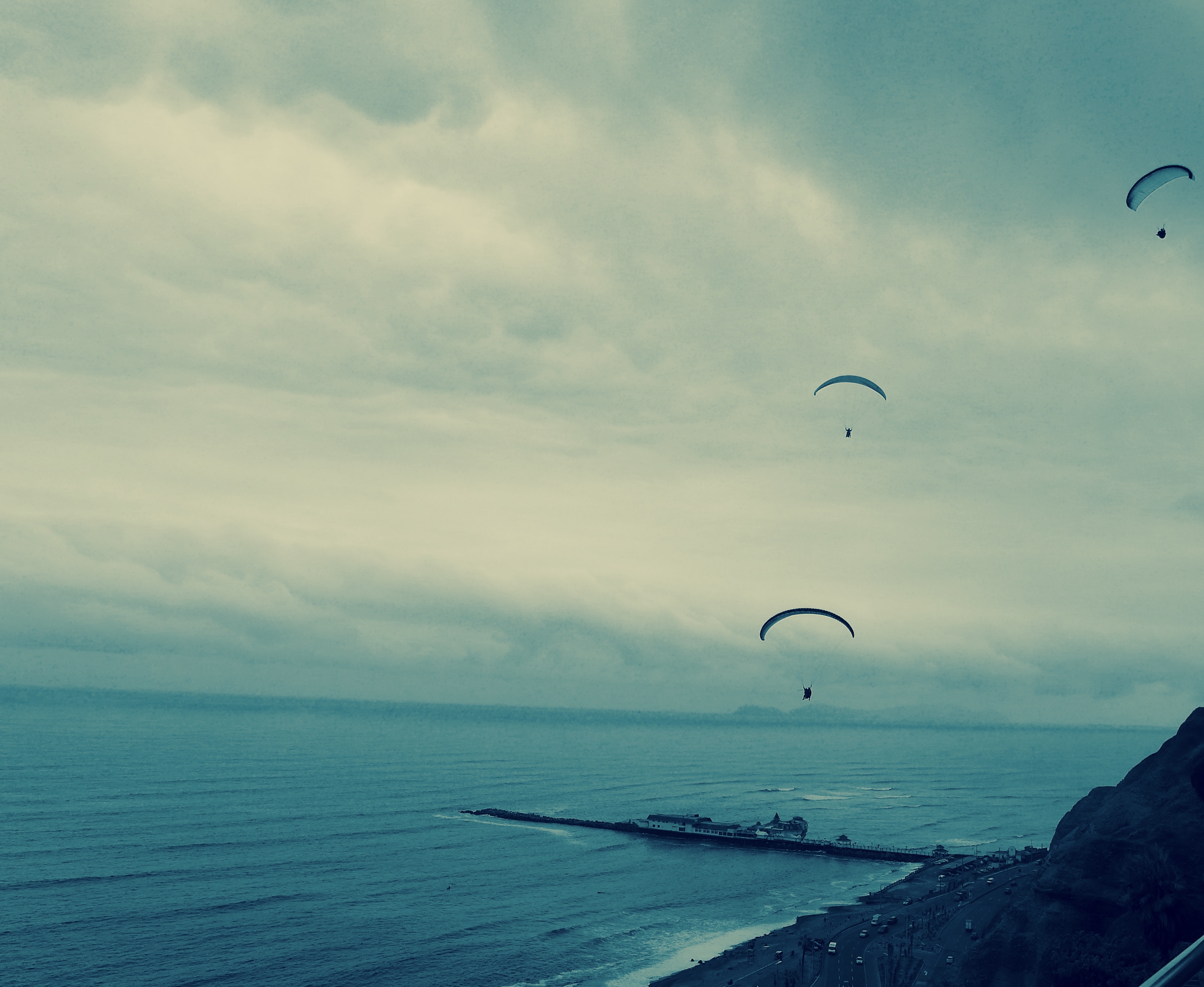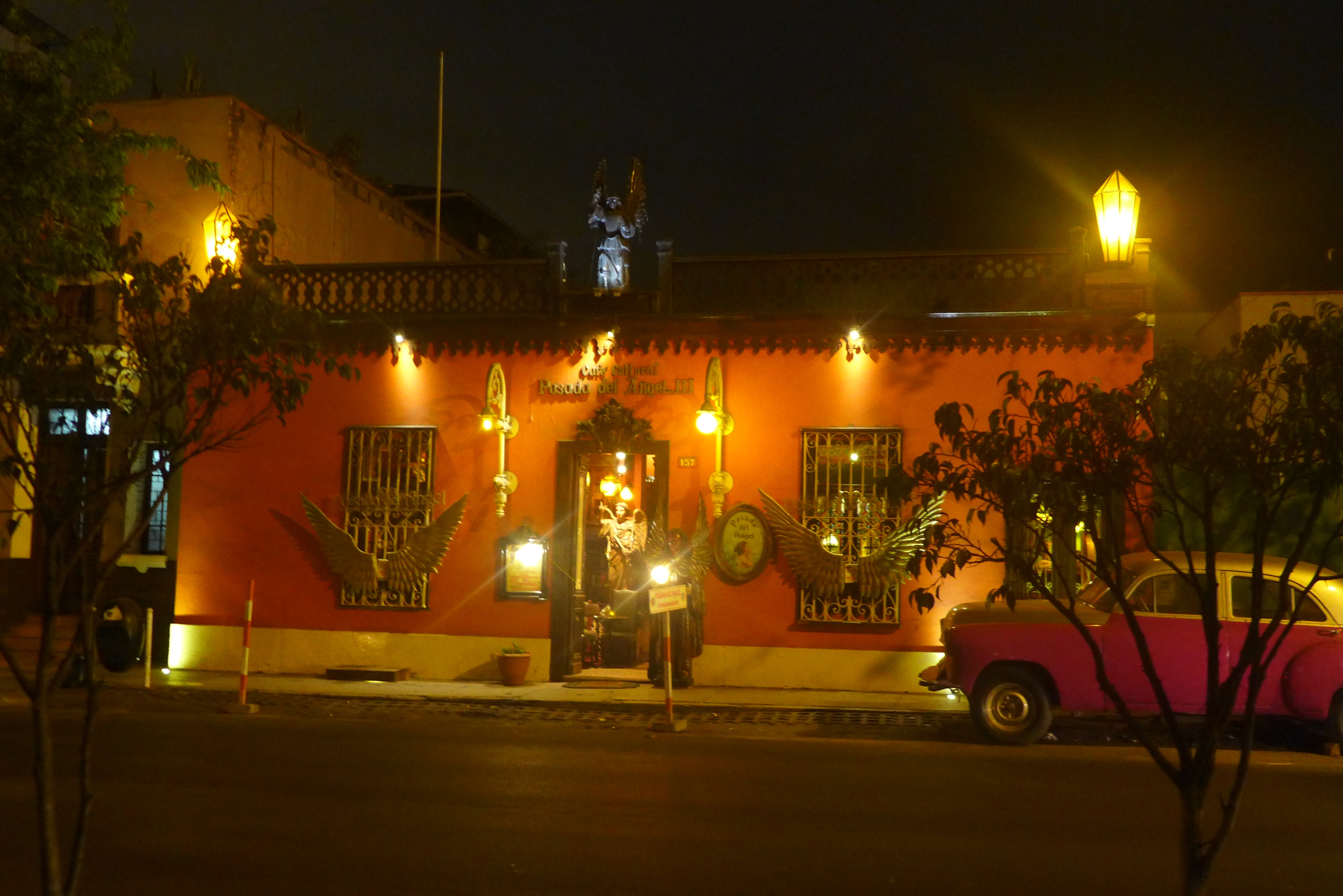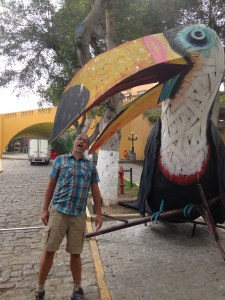We arrived on a morning flight for our second exploration of Lima. I won’t gush about the apartment we rented like the one in Barranco, because frankly, it was a complete dive. But, as they say, it is somewhere to lay your head. How bad was it? None of us felt we could walk around the apartment without shoes on. Maybe our apartment tainted our joy for Lima or the fact that we passed a stomach bug between each other for a few days, making excursions all together difficult but our second trip to Lima was definitely not as glorious at the first. Lima does not have an easy to navigate public transportation system; therefore, we decided to jump on the double-decker city tour bus to get an overview of the city, plus the girls had been begging to ride one for the last month. The tour bus took us around Miraflores and then headed to downtown where we could see the Plaza de Armas and various other historical sites. While good in theory, viewing the city in this way was not so good in action.  The traffic is HORRENDOUS in Lima. This may be for many reasons, but I am sure it is mostly because the traffic laws seem to be optional. For example, if one would like to make a left hand turn across multiple lanes of traffic, it is socially acceptable to start your turn while traffic is moving and stop in the middle of the lanes until the way is clear or other drivers finally concede to your action. The same is true of making a right hand turn. If you realize too late that the street you need to turn right on is now here and you are in the center lane, it is perfectly acceptable to go ahead and make that turn in front of your neighboring car by just making a quick honk to communicate your desire.
The traffic is HORRENDOUS in Lima. This may be for many reasons, but I am sure it is mostly because the traffic laws seem to be optional. For example, if one would like to make a left hand turn across multiple lanes of traffic, it is socially acceptable to start your turn while traffic is moving and stop in the middle of the lanes until the way is clear or other drivers finally concede to your action. The same is true of making a right hand turn. If you realize too late that the street you need to turn right on is now here and you are in the center lane, it is perfectly acceptable to go ahead and make that turn in front of your neighboring car by just making a quick honk to communicate your desire.
There we were in bumper-to-bumper traffic on the top of the double-decker bus, choking on exhaust fumes but making the best of it by marveling at the buildings and pure chaos of the streets below. The best part of the tour was when we finally arrived to Museo del Convento de San Francisco de Asis de Lima the only hop off destination of the “hop on hop off” tour. The church of San Francisco was built in the late 1600s and houses the remains of over 25,000 people in the catacombs. The girls were disturbingly interested and unfazed by the creepy, dimly lit underground maze, dank smell and displays of human bones and skulls. It provided a great lesson on the cycle of life for girls including more existential topics such as heaven and earth, spirituality and religion and differing beliefs on the subject. We were toured all over the church from the library, complete with iron spiral stair case leading to the high shelves of books, to the music balcony where we were able to voyeuristically watch some of a small wedding ceremony.
By far our best day of round two was the walk to a highly praised, very fancy cevicheria called La Mar. Jacob and I ordered the recommended ceviche dishes along with a plate of calamari and octopus sautéed in a sort of barbecue sauce accompanied by roasted Choclo, a type of giant corn found all over the country (you can find most often as street food. Venders, steam it in the husk and serve it with a slice of fresh cheese). We made a new ceviche aficionado out of our oldest daughter and our youngest was happy to stick with her beautifully cooked Mahi Mahi (no complaints there in the least). Jacob and I sampled the Pisco Sours, which are tangy, frothy, go-down-way-to-easily drinks that remind me of my Dad’s famous margaritas (he does not taint the tequila with margarita mix, lime juice only baby). Let the buyer beware before ordering your second Pisco Sour, there effect sneaks up on you! Good thing we were walking.

And walk we did! Miraflores has a lovely greenbelt with trails along cliffs that parallel the Pacific Ocean. There are playgrounds, green fields and sculptures that dot the way, beautiful views of the coast despite the clouds and intrigue as paragliders dip up and down in the sky.
Lima is a complex city and like all of Peru home to warm, friendly people. Infamously known for its crime and traffic but with hidden gems of neighborhoods that are trying, successfully, to enter the modern era. If we were to go back and I imagine one day we will, I would stay in Barranco or in a better part of Miraflores instead of the business district. The city is huge and I am sure even with the eight days we were there in total, there is still so much to see, do and eat.





